Your Persona Sucks And Here's What You Can Do About It
10 min read
ATTN: Marketers, product and service designers
You thought you know how to create personas. Put a name, picture, age, goals, likes and dislikes, and a few other meaningless attributes. You presented your persona to your peers or clients. They had a look at it within seconds they flipped through the next screen.
What’s going on? Why aren’t they staying longer to it check out? Why are they frustrated at your well-designed persona?
Simple. Your persona sucks!
Just have a look at a few of the low quality personas littered online.

Here’s the revelation to create personas that will gun-struck your peers and clients.
Your persona sucks because they are shallow, fixed, created in silos, based on assumptions and are static. The best personas are deep, takes into account multiple perspectives, and are constantly updated.
There are 4 rookie mistakes being made when creating a persona.
Rookie mistake 1: Your persona is shallow

It only has a name, image, age, goals, and few other attributes. And what’s worse is that the content inside the attributes is touching the surface level or even worse, false. Your persona is as useful as how many insights you can generate from reading it.
The best personas are deep.
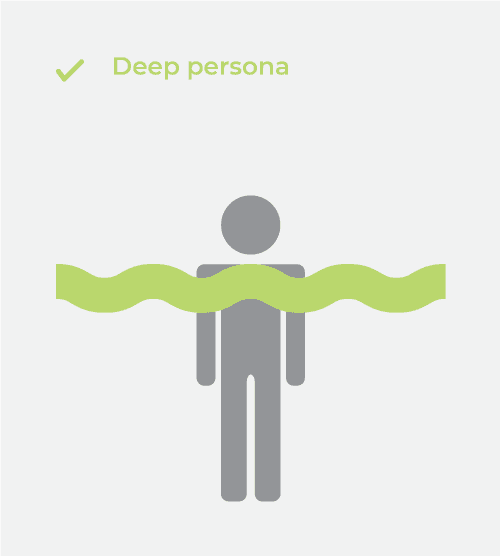
It consists of all relevant attributes that matter for teams to know. And within each attribute, they are described and elaborated succinctly.
If you don’t know your users enough, you’re going to struggle to place the right attributes and what to write inside the attributes.
Rookie Mistake 2: Your persona has fixed attributes
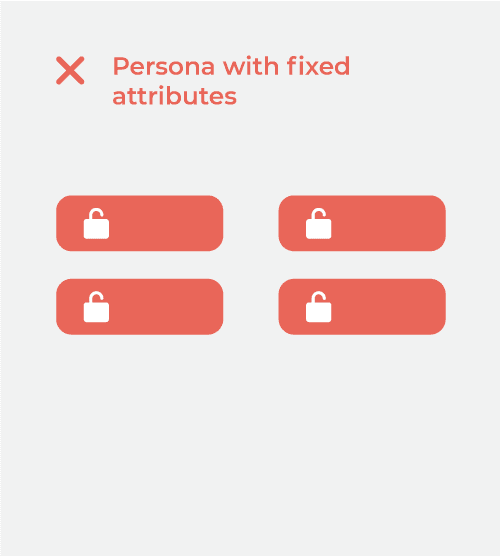
You have pre-determined what attributes must be in a persona regardless of the project, business or industry.
You might have heard that a practitioner claiming that they will put x, y, z attributes in all of their personas, and even worse, adamant in not changing them.
Having pre-determined attributes risk the persona of being obsolete or inaccurate.
The best personas have attributes that are relevant to them.
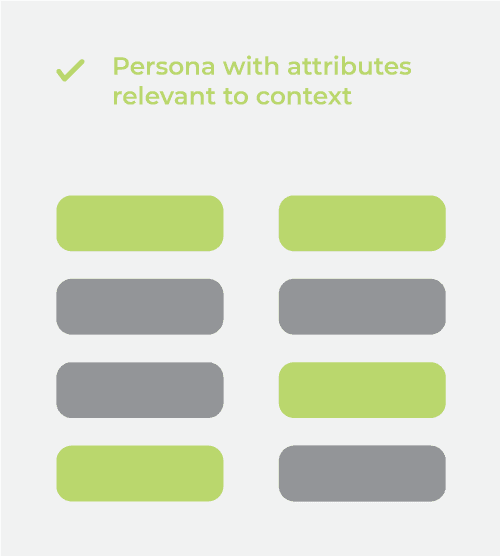
How do you know which attributes are relevant? The answer to this lies in how much do you understand the persona. The deeper you understand a persona, the more likely you will know which attributes are relevant to them.
Should you use “age” in a persona? It depends if specifying the age range matters in segmenting the target market. Eg. Age matters when describing a persona of elderly of over 65 years old, or children in certain age range.
The selection of attributes are contextual to project, business and industry.
Rookie mistake 3: Your persona is created in silos
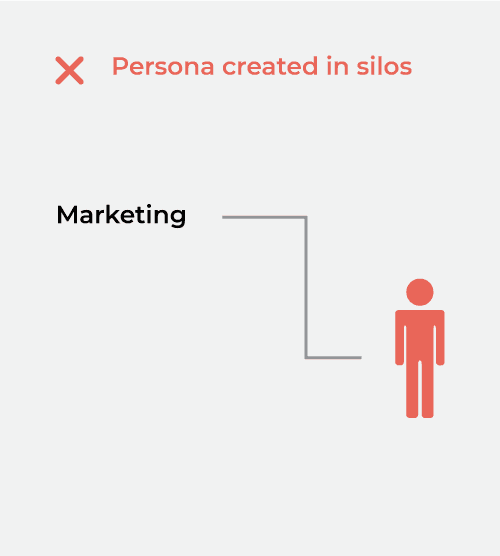
If you’re a designer, your persona is likely to be described from the current condition and problems. Eg. Pain points.
If you’re a marketer, your persona is likely geared towards the interests of marketing. Eg. Social media channels, COCA, LTV.
If you’re in sales, your buyer persona is likely to be more numbers-oriented. Eg. willingness to buy, sales cycle.
The problem is that the personas created from different departments biased towards their own because they are being created and updated in silos.
The best personas are holistic in perspectives.
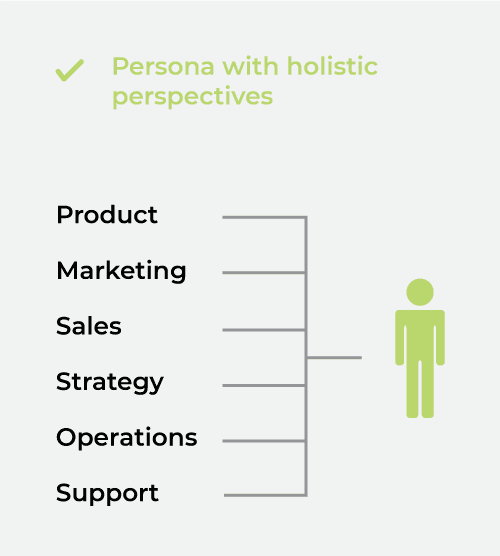
It takes into account different perspectives from different departments to consolidate horizontal views of the persona in order to generate holistic insights. Your company serves the same persona, therefore different departments should create and update the same persona in one view.
If you can’t get cross-functional teams from other departments to co-create with your personas, then you have a collaboration problem within a siloed work structure.
Rookie mistake 4: Your persona is not validated

Great you created a persona. Some contents could be based on your experience. But other contents are made up from your assumptions.
The assumed views of the persona is dangerous. Many strategic and tactical decisions across departments trickle down from the persona. If your persona is inaccurate, even slightly, your teams’ efforts and resources could be wasted.
Imagine if you specified the persona’s preferred social media channel as Facebook when you found out later that it’s actually not Facebook, but TikTok.
Your marketing budget spent on ads and hiring marketers to write and blast the ads are wasted.
The best personas are validated.
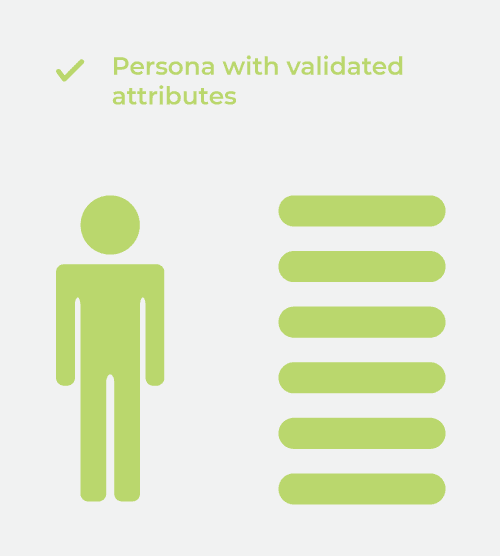
And they must be validated quickly. You may not be able to validate all parts of the personas at one go. However you can validate some attributes and others later. Different attributes are validated through various means by different departments.
Paid ads results can tell you how much it costs to acquire customers and at what volume.
Interviewing or observing customers with ethnographic research can tell you their qualitative aspects of their lives in your context.
Have a mock-up? Test it out.
Use any means necessary to validate persona attributes quickly. There are many methods and tools out there that allows you to validate different attributes.
If you aren’t able to validate or accessing the people behind the personas, there is no point continuing any other initiatives to save you time, effort and resources.
Rookie mistake 5: Your persona is static

You treat your persona as a one-and-done exercise. You don’t touch it after the first one. It’s stored somewhere in your folder that no one has access to. You are aware that there are updates to be made in your personas, but you don’t think that it’s urgent enough to warrant you extra work.
You can’t be blamed right? If your tool to store your personas is either in PPT or digital whiteboard or is stored as customer 360 that you don’t have access to or depicted in biased attributes. You’re partly right. These tools do limit you, but shouldn’t stop you from updating your persona.
Your persona in 2019 is likely to be different than in 2020. Coronavirus has changed the lives of many and that affect the attributes.
The best persona is updated real-time.

Either it both updated automatically and manual. Automatic updates of persona attributes are enabled by integrations from other platforms or sources. The insights generated from other platforms can be reflected in the persona attributes.
Quantitative attributes such as LTV, COCA sales, lead status, are usually capable of being updated real-time through data integration from other platforms.
Anything else that requires updates in qualitative attributes such as goals, pain points, are updated manually updates on an ad-hoc basis.
If you can’t update the your personas real-time, change your tools.
These are the 5 rookie mistakes why your persona sucks, and the best personas have these characteristics:
1. Deep in attributes
2. Attributes relevant to context
3. Holistic in perspectives
4. Validated quickly
5. Updated real-time
By avoiding these rookie mistakes and implementing these interventions, your work will generate positive domino effects in other functions. You will know what solutions to provide to your personas. What features to launch in stages. Your messaging and marketing touchpoints will resonate. Your sales can close deals effectively. These are just a few of many benefits that trickle down.
If you want to resonate with others using personas, create one easily and update continuously with an interactive and keep it in a centralized location that is accessible by your teams, get alignment and the same view of one single source of truth of what the persona is, use Business Innovation Design to get the job done.